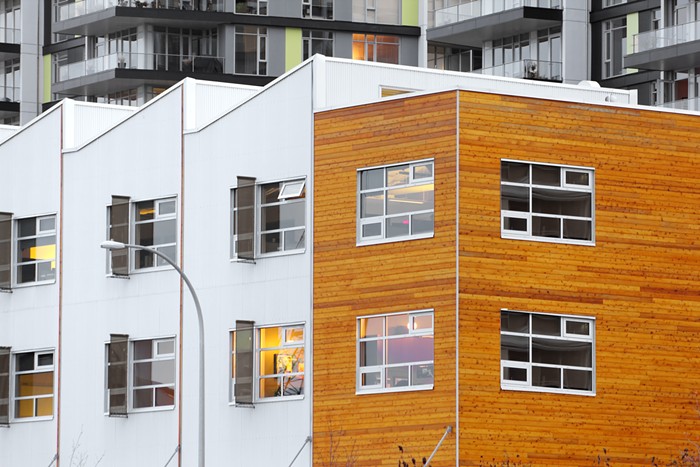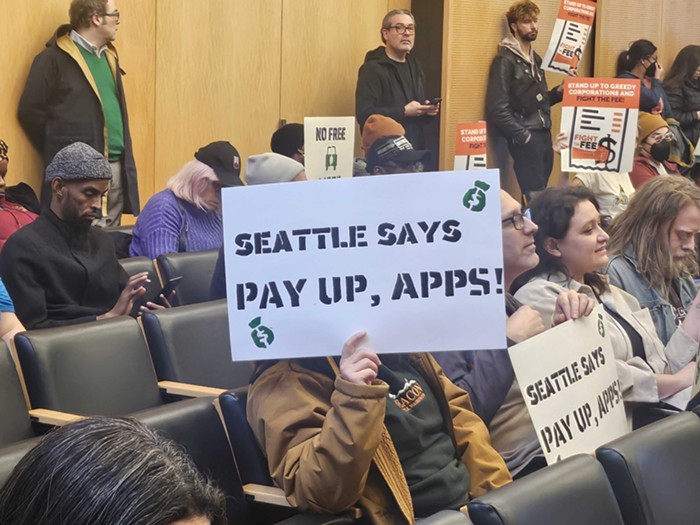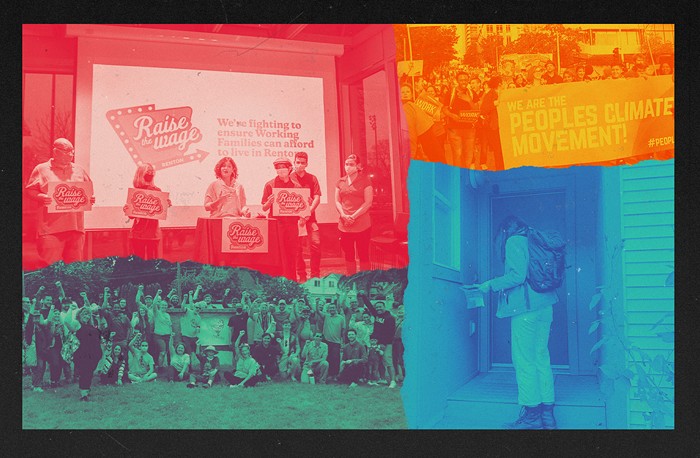
Back in the mid-1990s, I was an undergrad architecture student at the University of Illinois at Chicago while working part-time as an intern at a large architecture firm in downtown Chicago. My family had moved to the Chicago area after I graduated high school in Florida, and after spending most of my childhood as a Navy brat moving around between various suburban, exurban, and flat-out rural areas up and down the East Coast, Chicago was the first city where I fell in love with the idea of living in a dense, vibrant urban neighborhood.
After a couple years of living with my family in the distant suburbs of Lake County and traveling into the city via commuter train, I rented a dilapidated 400-square-foot studio apartment on West St. James Place for $485 per month, which my friends considered outlandish at the time. A small grocery store was half a block away on Clark Street, and magnificent Lincoln Park was a half-block in the other direction. I had no need for a car; three ‘L’ lines and a multitude of bus routes where within a 10-minute walk, and the neighborhood contained a healthy mix of housing types as well as options for shopping and nightlife.
I barely had any money at that time in my life; my part-time job paid a meager hourly wage, and the rest of my living expenses were paid with student loans and credit cards, which banks began showering upon me the minute I registered for my first semester of classes. (Kids, do yourself a favor and throw those offers away. All that free money comes with a huge price tag.) When things got really bad, I’d sell off a few CDs from my collection to buy a roll of laundry quarters or some transit tokens. Despite the fact that the neighborhood had been gentrified since the 1970s, I was still somehow able to make a place for myself there, put food on my table, and keep a roof over my head. My neighbors ranged from multimillionaires to people with far less money than me, and somehow it worked.
One of the projects in my office was a new nature museum a short distance from my apartment in Lincoln Park. The museum was going to go up on the former site of a dilapidated Park District maintenance facility. Local neighborhood groups raised objection after objection to the nature museum. They cited all the usual suspects: traffic, parking, and of course, the free square in NIMBY Bingo, “neighborhood character.” The City of Chicago, while not exactly renown as an example of responsive government, had been painstakingly working with the neighbors for months to address their concerns.
Finally, the time came to demolish the old maintenance building and begin construction on the new nature museum. According to a former coworker, angry neighbors had one final objection: Apparently the site was home to a feral cat colony and the neighbors insisted that the city find new homes for the cats before beginning demolition. At around 5:00 the morning after the issue of the feral cat colony was raised, a Park District van pulled up to the facility. A man got out, pulled a chemical tank from the back of the van, and gassed all the cats. Demolition work on the maintenance facility began within the hour.
Thousands of tourists and school kids now visit Chicago’s newest lakefront museum each year, apparently blissfully unaware that it allegedly sits on the site of a feline genocide. As Jim Malone would say, that’s the Chicago Way.
I can’t personally vouch for the accuracy of that anecdote (also: I personally love cats and please don’t call my former employer), but it’s been in my mind lately as I watch Seattle struggle to address its housing crisis. The issue has taken on a personal dimension, as I begin the process of buying my first home after years of renting, and I face up to the fact that most of the real estate listings in my price range are in Bremerton and Tacoma.
Mind you, I’m one of the fortunate ones; at least I have options. My days of being a part-time intern are long gone, and I now enjoy a solid middle-class salary at a job I love and currently live in decent rental apartment downtown. And while I still carry a six-figure mountain of student loan debt, all those old credit cards somehow got paid off, and for the first time in my life, qualifying for a mortgage is no longer the stuff of fantasy.
I can’t even begin to imagine what this city must be like for somebody who washes dishes for minimum wage, or somebody whose health issues, skin color, or other circumstances make it difficult to have any options at all. But the rows of tents under the viaduct near my office and at other places throughout the city give some indication.
If the Chicago Way could be described as cracking a few eggs to make an omelet, the Seattle Process was described in a 1983 Seattle Weekly editorial as “seeking consensus through exhaustion.” And lately, our consensus is to do nothing while the city transforms itself into a gated playpen for the wealthy.
The city’s recent Draft Environmental Impact Statement for Accessory Dwelling Units (ADUs) confirms what many of us in urbanist circles have long known: Single-family zoning in the city is suffocating the supply of new housing in Seattle. While apartment buildings were once permitted throughout most of Seattle, the Fair Housing Act of 1968 saw the practice of redlining made illegal. Enter single-family zoning as a convenient way to keep minorities and low-income people out of your precious neighborhoods without running afoul of federal law. New census data shows that the vast majority of the city’s population growth has been shoved into a small sliver of its land area, while most single-family homeowners are now millionaires simply by virtue of having arrived here first. Brett Hamil’s Proximity Law of Seattle Politics comes to mind: Seattleites are happy to drive around in their Subarus with Bernie stickers plastered to the bumpers, but prepare to be shouted down by NIMBY thugs if you rock the boat by proposing, say, a modest head tax to fund new housing or the slightest change to the zoning code. Seattle’s political leaders are terrified to say to hate groups like Safe Seattle, “Sorry, but you’re dead wrong on this and we’re going to move forward. Eat it, swallow it, deal with it.” The result is civic paralysis at worst, or watered-down half-measures at best.
A few weeks ago I flew back to Chicago to catch up with old friends and wander around a bit in my old neighborhood. I was struck by the variety of housing: walk-up buildings with gracious courtyards, four-flats and townhouses, high-rise condo towers, and even a few single-family houses, all next to each other on the same streets. A quick look at Redfin shows a multitude of condos on the market in prime Chicago lakefront neighborhoods for less than $300,000. The cheapest condo currently on the market in downtown Seattle is listed for over double that. And with grand street trees, mass transit, and vibrant retail within easy walking distance, I’ll gladly take the “neighborhood character” of Chicago’s Lincoln Park or Lakeview over Seattle’s Wallingford or Phinney Ridge any time.
This isn’t to gloss over Chicago’s sins, which are many. The city remains corrupt and racially segregated, gang crime is rampant in some areas, and the Chicago Police Department was into brutalizing minorities decades before anybody knew what a hashtag was. An entire freeway and a university campus were built as barriers around black neighborhoods on the South Side. Andrew Diamond, author of Chicago on the Make, called the city “a combination of Manhattan smashed against Detroit,” and he wasn’t wrong.
But in certain cases, like not allowing a few angry cranks to dictate the city’s future, Chicago sometimes gets it right. Seattle needs to take a page from that book, even if it means—metaphorically speaking, of course—gassing a few cats when the need arises.
UPDATE: Yes, I'm aware that the population trajectories of Seattle and Chicago don't make for a true apples-to-apples comparison, but it's worth noting that most of Chicago's population loss is occurring in the outer neighborhoods of the so-called "Bungalow Belt" and inner-ring suburbs; downtown and the transit-rich inner neighborhoods are doing just fine. In fact, Chicago has the second-highest number of tower cranes in the nation after Seattle. There's obviously strong demand for new housing in certain areas, and it's getting built.
David Cole, AIA is an architect in Seattle.


















